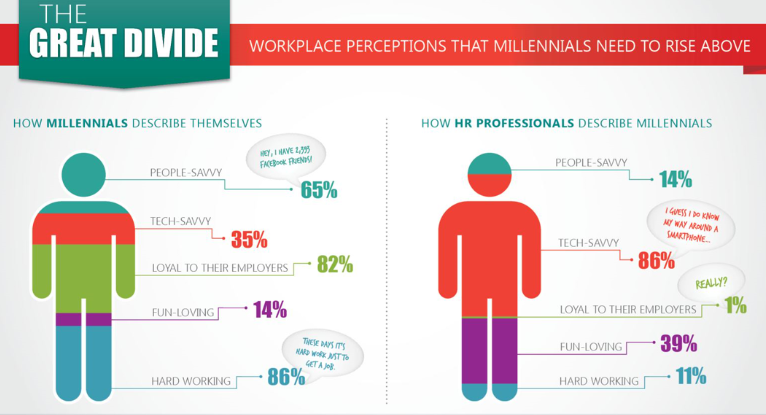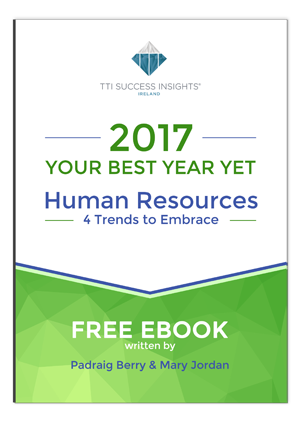Managing a Multigenerational Workforce: The Highs and Lows
As we now have at least three generations in the workforce – Baby Boomers, Generation X and Millennials – organisations need to adapt to get the most out of their people. Forbes makes the point that, in theory, modern organisations could have employees aged 18 and 80 in the same office. The different generations need to be managed and treated differently, and they each have different expectations and needs.
So, who are these people? The jury is out on the exact classifications, but they should be treated as guidelines.
Baby Boomers are people who were born in the early 1940s to the mid-1960s. Often referred to as ‘Boomers’, they were born at a time of particularly high birth rates in the US.
As this Research Gate publication points out, they are typically described as achievement oriented and loyal to organisations. They are respectful of authority and they view success materially.
Generation X, or Gen X, was born between 1965 and 1979. They were influenced by a time of economic uncertainty and recession, and are stereotyped as expecting promotion sooner than other generations.
Millennials are the youngest generation in the workforce, born between 1980 and 1998. They are tech-savvy, digital natives. They crave freedom, flexibility, professional development and purpose from their work experience.
According to an interesting NextGen study of PwC employees, they also hold greater expectations around support and appreciation than their Non-Millennial co-workers.

The challenges of managing a multigenerational workforce
It is projected that in ten years’ time, Millennials will make up 75% of the workforce. This will undoubtedly impact on the culture of organisations. The main challenge of managing a multigenerational workforce is not so much for the people working, but for the management.
The trick is learning to communicate appropriately – not necessarily effectively – with the different generations.
Other challenges could arise from conflict around differing perceptions, values, behaviours and attitudes. For one, their expectations of work are different – whereas Millennials value rapid advancement and continuous lifelong learning, Baby Boomers are often content with job security.
It’s important to combat against negative stereotyping and exclusion at work. Millennials may perceive Baby Boomers as being ‘stuck in their ways’ and hard to train. Likewise, tension may arise when older workers see Millennials as being too determined to challenge organisational norms.
Also, with the emergence of technology, Millennials are in a better place to enjoy online learning than Baby Boomers, who may prefer to learn in a classroom environment.
The key is to get the right balance between the experience and understanding of older workers, and the energy, enthusiasm and innovation of Millennials.

4 tips for managing a multigenerational workforce
Performance management
Put a performance management system in place that will work for all generations, so that it will play to what’s of interest and what’s important to them. The key here is not focussing exclusively on the usual KPI’s but to initiate an ongoing dialogue.
Ask your people questions like ‘what’s working, not working? What can be done differently?’ Use the Start, Stop, Continue Model.
You should meet with them regularly, once a month/week, practice active listening and allow them to self-review. As a result you learn to engage with the person in a way that is meaningful and appropriate for them.
Ensure a development plan and ongoing coaching is included. Different generations have different needs, different wants – different everything – so tailor your feedback in the same way.
Learn to communicate effectively
Engage employees with practical communications training on an ongoing basis. This can help people see things through the eyes of others and learn to understand each other.
After all, when it comes to teams, understanding really is key to performance. In TTI we educate teams on their individual behaviours and motivators. Everyone has a chance to appreciate the different styles, personalities and their fit on the team.
We recommend people have their Team Wheel on the wall as a day to day reminder and also the poster of ‘words that don’t work’ with different personalities (see this TTI White Paper for more). It doesn’t matter what generation you are as long as you feel people ‘get you’.
Organisations that put behavioural and motivational wheels of team members on the office wall experience better communication. This is fundamental to superior team performance.
Develop a rhythm
As with the performance management meetings, hold non negotiable weekly/monthly team meetings. Follow the same format each time – use a model like the Who, What, When and make the meetings action-oriented.
This sets up a rhythm of constant communication which helps hold people accountable, ensures clarity of roles and lets people get feedback on whether or not they’re on track.
Build a sense of team through planning
How do you build a sense of team with a multigenerational workforce? A team is a group of people who come together to achieve an agreed goal. When a team develop a plan, everyone is involved. And then they must work together to achieve these goals.
They start to connect with each other and begin to see each other’s contributions, their different roles and responsibilities, until suddenly it becomes less about differences and more about the shared goals and the commonalities.
Their common purpose unites and drives them. Planning is a great team building exercise that every generation can participate in and add value to.

Final thoughts…
Managing a multigenerational workforce isn’t always easy. Different generations can have differing values, perceptions, communication styles and stereotypes about others.
But it’s not impossible.
Remember Nelson Mandela in South Africa when they were trying to build bridges? They pulled people together from both sides of the divide for residential weekends. They refused to talk at first, but eventually they had to. It starts with pass the salt please! As they talked, they realised that they were all human beings.
Organisations with multigenerational teams face the exact same scenario. The key is get them working together and to realise that they all have something different to bring to the party.

GET THE COMPLETE GUIDE TO HR TRENDS FOR 2017
This is the complete guide to get you and your HR department on track in 2017. For a limited time only we are giving this away as a free download.
Do you want 2017 to be a great year for your and your organisation?
How Employee Experience Leads to a Highly Productive Workforce
We believe in order to create engagement, employers need to move beyond believing that experience is all about extra benefits at work such as Massages Mondays and Pool Tables. Real employee experience begins with meaningful work. What can your organisation do to create meaningful work for your people? What can you do to make your people feel connected and to feel like they belong and they trust you? Isn’t this what Experience is all about?
DISC vs. MBTI
How does DISC compare to MBTI? This is a common question many people have asked us over the years. There are many different angles to consider, as both tools are used frequently in organizations, but in different ways. In this article, we will answer...
Podcast – Building Authentic Empathy
Recently Padraig spoke with Dale Dixon on the complete leader podcast. Host Dale Dixon interviews Business Coach and Strategist Padraig Berry, who is the CEO of One Focus Business Consultants and TTI Success Insights Ireland. On today's episode, Dale and Padraig...
GET THE COMPLETE GUIDE TO HR TRENDS FOR 2017
This is the complete guide to get you and your HR department on track in 2017. For a limited time only we are giving this away as a free download.
Do you want 2017 to be a great year for your and your organisation?




